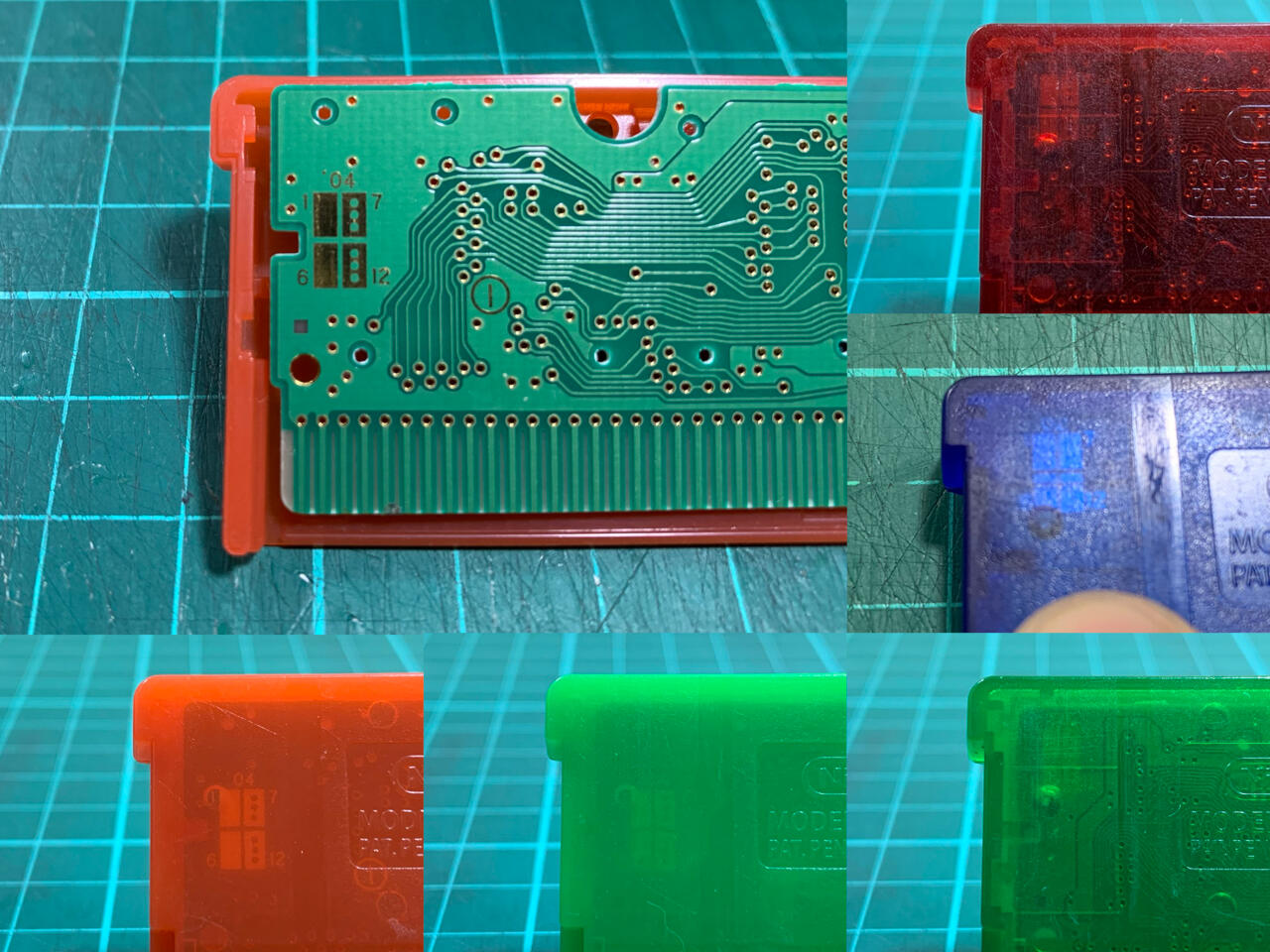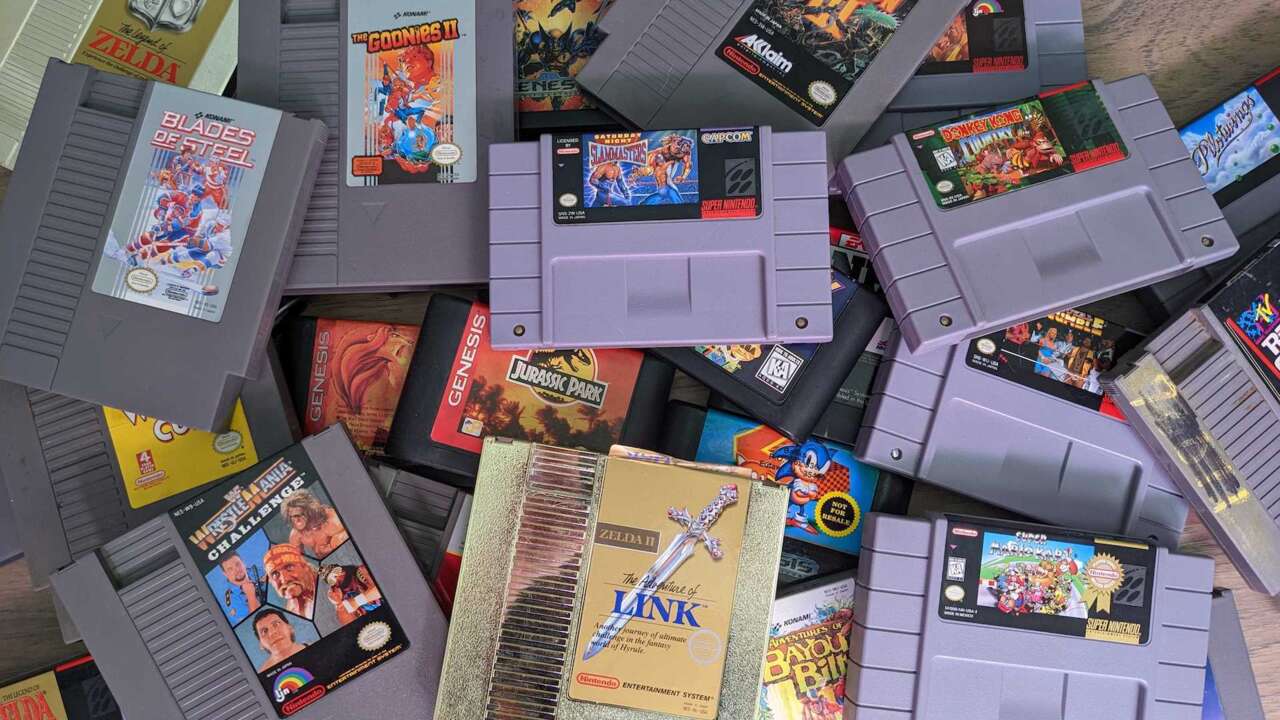Meet The Game Verifiers Guiding Retro Collectors Through A World of Fakes
Last year, Reddit user tosamyng had a problem. After seeing a post on a game collecting subreddit with several convincing fakes of popular Pokemon games, they began to wonder if their Pokemon collection was riddled with bootlegs, too. Luckily, they knew just where to go: r/gameverifying, the Game Verification subreddit.
Tosamyng posted a detailed gallery of their Pokemon games to the community, complete with boxes and photos of each individual game, front and back. In total, the haul represents thousands of dollars worth of retro goodness, with each of the “complete-in-box” GBA games fetching between $200 and $500 on the open market alone. It’s no exaggeration to say that if even a fraction of these copies had turned out to be bootlegs, it would represent a loss of hundreds (if not thousands) of dollars to the owner.
Fortunately, tosamyng’s story has a happy ending: All of their games passed the test. However, they’re one of the lucky ones. For almost three years now, the Game Verification subreddit has served as a bulwark against the waves of fake retro games that crest against the shores of eBay, Etsy, and other digital storefronts. But as the community’s co-creator, Frontzie puts it, the outpouring of fake and bootleg retro games has only gotten worse since COVID–and he expects it to stay that way.
“The number of bootlegs has increased over time, especially throughout the pandemic,” Frontzie says. “However, the production of bootlegs seems to be shifting over to better, more improved fakes, albeit in smaller numbers. We’ve noticed that fake Game Boy Color/Advance PCBs and shells have improved somewhat, getting closer to a 1:1 reproduction.”
On paper, r/gameverifying is a small community–at around 14,000 subscribers, it pales in comparison to similar boards like r/gamecollecting, which boasts over 210,000. Despite this, the subreddit gets dozens (sometimes hundreds) of posts a day from aspiring collectors who want to know if the amazing deal they found on eBay is indeed too good to be true. (It usually is.)
In fact, Frontzie and a friend originally founded the subreddit due to an onslaught of verification posts on r/gamecollecting, which caused some users to complain. Today, the community has 19 “trusted verifiers” who pronounce judgment on the flood of photos that users post of their collections. However, though most Redditors are wise enough to read the forum’s rules before jumping in–omit all seller information, don’t ask for valuations or grading, and definitely post front and back–some simply dump muddy, low-resolution auction images and expect the verifiers to do their best anyway. That’s a great way to ensure that you don’t get any advice at all.
“I think retro gaming has exploded in popularity because those gamers who grew up with Pokemon are now aged 25-45 and actually have ‘adult money’ to purchase things,” says Frostigator, a truster verifier and moderator. “My main tip is that if it sounds too good to be true, it’s a fake or a scam 99% of the time.”
As seasoned collectors know, fake and unauthorized games have existed for almost as long as the video game industry itself. For example, Atari’s original Pong was heavily “inspired” by the Magnavox Odyssey’s ping-pong game, arguably to the point of outright infringement. This ultimately resulted in a lawsuit. In terms of more obvious bootlegs there are a number of infamous Famicom carts from the ’80s and ’90s, including the misleadingly-titled porn game Super Maruo, and Somari, which essentially drops Mario in Sonic the Hedgehog 1.
Due to the fraudulent nature of fake games, it’s very difficult to pinpoint exactly how they’ve changed in recent years. Based on the experience of the verifiers, however, the volume of fake games has only increased over time. And while any game can be faked–Frontzie cites copies of Cooking Mama and Hello Kitty as frequent examples–the most common games posted to r/gameverifying all belong to the same franchise: Pokemon. In fact, several verifiers said that they first joined the community when they realized that their own Pokemon cartridges were fake.
“For me, it was a copy of HeartGold,” says Mutty, a trusted verifier. “I decided to join the community to train myself to recognize fake games, and to make sure other people didn’t have to experience what I went through. It’s mostly DS and GBA cartridges, since they’re the most common.”
“I think the main reason that we see so many Pokemon bootleg cartridges is due to the value retention of legitimate Pokemon games,” says GameFrank, another trusted verifier. “Many gamers want to play the original versions for themselves, but maybe can’t afford to drop over $100 on a Nintendo DS or Game Boy cart. The bootlegs are, unfortunately, a cheaper alternative for those wanting to play these games in an affordable way.”
The further proliferation of bootlegs–as well as increased demand from buyers–has led the verifiers to create illustrated guides for console games from the Atari 2600 to the Nintendo Switch. These guides are currently hosted on the subreddit’s wiki, though the community’s staff are in the process of moving them to an external website. If you don’t have time to wait for a verifier to respond to your post, buyers hoping to plop their hard-earned cash on the real thing should check the subreddit’s wiki in order to divine an online listing’s legitimacy for themselves.
Some verification methods are more straightforward than others. If you’re in the market for 3DS or Switch games, you can rest easy for the most part. Modern copy-protection methods have made it very difficult (if not impossible) for would-be-bootleggers to make their own version of these late cartridge-based systems. However, if you’re ever in doubt about the legitimacy of your Switch games, you can lick them–it should taste quite bitter. This is a real method that Nintendo uses to prevent young children from biting down on your copy of Super Mario Odyssey.
The more obscure the console, the less likely you are to stumble on a bootleg. If you’re trying to collect WonderSwan games, you probably don’t need to worry about an army of fraudsters bilking you with fake carts. However, some of the more sought-after titles for lesser-known consoles are still in the danger zone. The Sega Saturn is usually only reserved for true enthusiasts, but there are so many reproductions of the classic Panzer Dragoon Saga out there that one user made a dedicated guide to identifying the real thing.
As for the more common collectable games, there are a few rules of thumb that can help you suss out a fake in a matter of seconds and with minimal tools. For example, fake Nintendo 64 games tend to be more rounded than their legitimate equivalents. Did you ever notice that the dot of the I in “Nintendo” on N64 carts is square? If it’s a circle, it’s a guaranteed bootleg. (Go ahead, check your collection. I know I did.) Even the shape of the screws in the back of the cartridge assembly can help determine a copy’s legitimacy. Real N64 carts are round all the way around the edge, while most bootlegs tend to have hexagonal screws.
However, some of these “rules of thumb” have become outdated over time, as bootleggers have become more savvy and quality-sensitive. Although fake DS games were once a rarity, many reproductions have “M8” etched near the top of the prongs, which collectors used as a telltale sign for years. Today, some bootlegs have taken to replacing this with “MB,” which could denote either a real or a fake cart.
Indeed, perhaps the most famous such “rule of thumb” is no longer reliable at all–a victim of its own success. For years, Pokemon fans looked for the “four gold rectangles” as an easy verification technique for highly desirable Game Boy Advance carts of Generation 3 games like Ruby, Sapphire, and Emerald. If you could make out four rectangles through the translucent plastic on the back of the cart, the story goes, you can be sure that your copy is legitimate.
Unfortunately, this factoid became so popular on video game forums and social media that fakers clued in to it, and verifiers no longer regard it as a reliable indicator of anything. One scammer even tried to pass off reproductions of Gen 3 Pokemon games by inserting a drawn piece of paper in the cart to “replicate” the look of the telltale rectangles. At least they tried.
Of course, short of these easy methods, there’s no substitute for opening up the cartridge and having a look at the board inside. However, that’s easier said than done. You can find authentic reference images of the innards of popular games with a little bit of Googling–the game verification wiki links to several repositories. Most carts for collectable consoles have small screws that require a specialty electronics set like the iFixit Pro Tech Toolkit. Some consoles are more hack-friendly than others. While opening a Game Boy Color game is pretty straightforward, it’s pretty much impossible to put a DS cart back together once you’ve opened it, so stick to external methods there.
While these specific verification methods are useful in their specific situations, if you want to avoid bootlegs altogether, it’s best to harness some logic rather than snapping up a “great deal” in a nostalgia-drenched haze. Mutty suggests that buyers check the site PriceCharting in order to determine if an online listing’s price is within a normal range. Others say to avoid sketchy online auctions altogether, especially on Etsy. “Retro game collecting is expensive,” Mutty says. “You need to learn how to find good deals.”

“If you’re a first-time collector, you should make sure you’re purchasing from reputable sources,” GameFrank says. “While general market sites like eBay and Mercari have retro gaming options, I would advise trying to network with collectors. I myself have joined local Facebook groups to find gamers selling and trading their unwanted video games.”
Fraud in video game collecting goes beyond selling bootlegs as the genuine article. There’s an argument to be made that the popularity of aftermarket consoles made by boutique companies like Analogue have also helped push the market into overdrive. But not every collector actually plays the games they buy. In recent years, game collecting as a community has moved towards “grading” individual copies of games for their quality and value. While there’s nothing wrong with trying to standardize the hobby, some observers have described the current state of the retro gaming market as a bubble, with collectors selling “highly-graded” sealed copies of popular (but common) games like Super Mario 64 at seemingly-inflated prices.
These high-profile auctions might raise eyebrows, but it remains to be seen if they have any impact beyond the very top-end of the market. However, judging by social media posts, it does seem that more collectors have interest in gobbling up factory-sealed copies of their favorite games, which often sell for five to 10 times more than a “complete-in-box” version. Unscrupulous sellers will simply “reseal” a legitimate copy of a game in shrink wrap and make far more profit. It’s often difficult to tell a fake seal from the real thing based on low-quality photos, but the verifiers do their best.
Overall, while the world of game-collecting is bigger than ever, it’s also fraught with peril for collectors that don’t do their research. If you’re planning to drop a significant chunk of money on one of your favorite childhood classics, you might want to ask the game verifiers before you click that buy button. And it’s unlikely that the verifiers will run out of work anytime soon–as younger gamers continue to age into spending money and nostalgia, brave new worlds of video game scams will emerge. For example, disc games have always been easier to pirate than their cartridge-based equivalents–and that extends to the bootlegging scene, too.
“It’ll be interesting to see how Blu-Rays will be affected,” Frontzie says. “The barrier to entry to creating your own counterfeit PS1 discs is $100. It’s scary.”
The products discussed here were independently chosen by our editors.
GameSpot may get a share of the revenue if you buy anything featured on our site.
Check out our Latest News and Follow us at Facebook
Original Source







